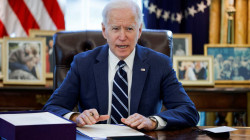A nuclear arms race is unavoidable without serious intervention

Shafaq News/ There are conflicting interpretations of the news that China has tested a specialised new long-range missile, capable of carrying a nuclear weapon around the Earth. US officials claimed it was part of a fractional orbital bombardment system (FOBS) which could travel in Earth orbit and then release a manoeuvring vehicle to glide toward a terrestrial target. China’s Foreign Ministry objected to that description, calling the launch simply a test of reusable space technology.
Details may be obscure, but a few things are clear. One, none of these technologies are new, and it should be no surprise that China is capable of fielding them. Two, while China’s nuclear arsenal remains much smaller than that of the US or Russia, Beijing is pursuing strategies to make it larger and more sophisticated. A nuclear arms race is on, absent a serious effort to stop it.
So why is China building new nuclear delivery systems and modernising its weapons after decades of retaining a modestly sized arsenal? One core driver is to make clear to an unconvinced United States that it is vulnerable to Chinese nuclear retaliation despite enormous investments in missile defences. Many of the technologies China is pursuing, including those believed to have been tested this summer, are designed to overwhelm or evade such defences.
If this sounds familiar, it should. This dynamic has echoes of the US-Soviet Cold War arms race. Many of the technologies — FOBS, hypersonic gliders, missiles equipped with multiple nuclear warheads — are even the same. It took years for the United States and Soviet Union to arrive at a shared understanding that unconstrained pursuit of missile defences was destabilising the strategic balance.
However, having exited the 1972 Anti-Ballistic Missile (ABM) Treaty designed to halt that race, the US has been developing a defence against intercontinental-range ballistic missiles for the past two decades. China’s new missiles hedge against the possibility that the United States may one day believe its technical advances permit it to strike China first while remaining invulnerable to a retaliatory nuclear attack.
Nominally, US strategic missile defence efforts are aimed at defending the US against North Korea’s much smaller and less sophisticated arsenal of long-range missiles, as well as possible future weapons from Iran. Despite decades of effort and tens of billions of dollars, it has made limited progress. Existing Chinese missiles can easily overcome such defences.
China’s concern is that the pursuit of highly effective defensive systems may reflect the desire of the United States to escape its own nuclear vulnerability, without necessarily giving up the ability to threaten others or doing the hard work needed to eliminate nuclear weapons entirely.
Without intervention, this leads to a cyclical, expensive, and dangerous build-up of nuclear offence and defence. This is an arms race that the US and China as well as Russia all seem prepared to participate in. Each is modernising its arsenal at great expense. Russia is developing a number of new offensive nuclear systems, which also have the ability to overcome or avoid missile defences. The UK and France, who possess much smaller nuclear capabilities, are also modernising their technology.
This one-upmanship will never provide a solution to the existential threat posed by nuclear weapons. The only winning move is to step off the track and return to the negotiating table. The parties to the 1970 nuclear non-proliferation treaty, including the P5 nuclear weapon states, are obliged to “pursue negotiations in good faith on effective measures relating to cessation of the nuclear arms race”. They will meet in January 2022 to take stock of their progress. Diplomacy, for all its certain challenges, is the only path forward.
Source: Financial Times
